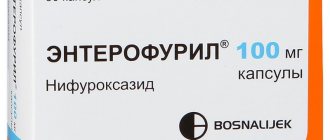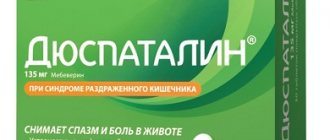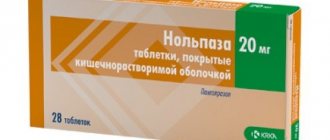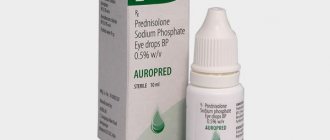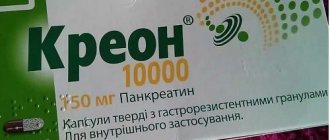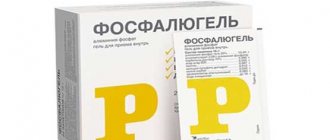Young parents experience stress when they first encounter the phenomenon of vomiting in their baby. In anticipation of it, the child’s well-being may worsen, but this is not necessary; quite often the unpleasant symptom manifests itself abruptly. The reasons can be very diverse: intoxication of various origins, disturbances in the functioning of certain body systems, such as the pancreas, damage to the body by infections.
If an indomitable and constant vomiting occurs, the child must be shown to a medical specialist. Before the doctor arrives, as well as in situations of uncomplicated illness, the use of certain medications is indicated, one of which is Enterosgel.
Description of the drug
The drug belongs to the group of enterosorbents. Its active component based on organic silicon compounds absorbs and absorbs toxins of various etiologies. In fact, the medicine has a similar effect to such a generic as the popular activated carbon. What are the instructions for using Enterosgel for children?
In descriptions, the drug is often compared to a sponge. With the help of this structure, the drug effectively manifests itself by binding all kinds of harmful microelements and toxic pathogens in the stomach and intestines, and then actively removes them. The active component does not interfere with the absorption of vitamins and other beneficial substances.
The drug is produced in the form of a paste for oral use. It is presented in the form of a dense mass that has a white tint. The active microelement of Enterosgel is polymethylsiloxane polyhydrate; its concentration in one hundred grams of paste is seventy grams. Water is considered an additional substance.
The paste is sold in sachets of 22.5 grams. There can be ten pieces in total in a package. Enterosgel is also produced in plastic jars or tubes of 225 grams.
Lower eyelash extension technology and cost
For lower eyelash extensions, the same materials are used as for the upper ones. Only the villi themselves should be a little thinner and shorter. The technology for eyelash extensions is also similar. The only difference from the top extension is the need to keep your eyes open and refrain from blinking, which is not at all easy to do.
You should be very careful when selecting an adhesive composition, because the entire procedure is carried out with the eye open and caustic fumes can negatively affect the condition of the mucous membrane, provoke lacrimation and interfere with the normal fixation of eyelashes.
The average cost for lower eyelash extensions is $15. This figure may vary depending on the professionalism of the specialist, the status of the salon you contacted, the expected effect and the quality of the materials used in the procedure.
Eyelash extensions are a very popular cosmetic procedure today. Many people decide to transform their look and extend their upper eyelashes, but treat lower eyelash extensions with caution. But the effect is doubly bright and expressive. The main thing is to contact an experienced specialist and listen to his advice on the type of extension and further care for thick and lush eyelashes.
Positive properties of the drug
The medication has sorption and detoxification effects. The active component provides the ability to combine toxic compounds. The medicine forms a film on the mucous membranes of the digestive organs that binds toxic compounds in the intestines, as well as in tissues, with their subsequent excretion in the feces.
Enterosgel paste is an intestinal enterosorbent. The main substance of the drug is not absorbed into the bloodstream and has a therapeutic effect in the intestinal lumen. How should children take Enterosgel when vomiting, in what dosage?
Symptoms of the development of cold barley according to different scenarios
There are different options for the formation and consequences of cold barley:
- Initial degree - swelling of the skin of the eyelid, dense to the touch (up to or more than 5 mm). There is irritation, minor pain, itching. The doctor prescribes conservative treatment, and if the tumor does not go away for more than a month, he recommends removing the chalazion.
- The middle phase is the occurrence of swelling of the eye, lacrimation, redness, an increase in the volume of the capsule, and painful sensations during pressure. From the inside of the eyelid, cold stye has a red tint with a gray center. As the tumor grows, discomfort increases as it puts pressure on the eyeball. If a rupture of the mucous membrane of the eyelid appears, or a strong proliferation of granulation, the cold barley must be urgently removed.
- When an infection occurs, the inflammatory process begins. An urgent surgical opening is required, otherwise scars will form on the eyelid.
Quite often, cold stye resolves on its own, without progression, but there is no point in waiting for this to happen; it is better to immediately consult an ophthalmologist. Untimely treatment of stye is especially dangerous for children, as they constantly rub their eyes and can introduce pathogenic microorganisms to the mucous membranes of the eyelids. People over 45 also need to visit a doctor if any tumor appears on the eyelids, as the conjunctival tumor may be of low quality.
MORE ABOUT: Phlebectomy of the veins of the lower extremities. Laser phlebectomy in Moscow prices.
Indications
This medication can be given to children for the following ailments accompanied by vomiting:
- Rotavirus infection is an infectious disease caused by rotaviruses. It is the most common cause of diarrhea in children.
- Acute respiratory viral infection is a group of clinically and morphologically similar acute inflammatory diseases of the respiratory system, the causative agents of which are pneumotropic viruses.
- Enterovirus infections are a multiple group of acute infectious diseases that can affect children and adults when infected with viruses of the Enterovirus genus.
- Digestive problems.
- Salmonellosis is an acute intestinal infection of animals and humans caused by Salmonella; acute infectious anthropozoonotic disease caused by Salmonella.
- Dysentery is an infectious disease characterized by a syndrome of general infectious intoxication and a syndrome of damage to the gastrointestinal tract, mainly the distal colon.
- Various poisonings.
There may be situations where the cause of vomiting has not yet been established, but parents would like to alleviate the child’s condition.
Definition, types and causes of stye in the lower and upper eyelids
Barley on the eye is an acute inflammation of a clogged sebaceous gland on the eyelid, caused by the penetration of Staphylococcus aureus or streptococcus into the pore. Externally, barley looks like a red, painful swelling, with a white or yellow purulent head gradually forming on it.
The inflammatory process can be localized in the lower and upper eyelids. The size of barley varies from a few millimeters to 2 centimeters. In some cases, the tumor leads to the inability to open the eyes.
Signs of barley begin to appear from the first days of bacterial penetration:
- discomfort, burning of the eyelid;
- the formation of a small, painful seal near the eyelashes;
- redness of the skin, sometimes the whites of the eyes;
- local increase in temperature;
- swelling in the area of the affected eye;
- formation of a purulent head.
There are 2 forms of infectious disease:
- External stye is the formation of an abscess on the outer side of the eyelid near the eyelashes. This is the most common type (90% of cases).
- Internal styes appear due to the penetration of bacteria into the meibomian glands located in the middle tissues of the eyelid. This type is sometimes complicated by chalazion, a chronic inflammation of the eyelid.
As already mentioned, barley occurs when bacteria penetrate the glands. Infection can be caused by touching your eyes with dirty hands or using expired cosmetics.
The risk of bacterial infection increases:
- in people with weakened immunity and vitamin deficiency;
- with hypothermia;
- with some concomitant diseases: blepharitis, diabetes, ARVI;
- when infected with helminths.
Sometimes the appearance of stye is associated with the penetration of demodex mites into the eyelid.
Barley is not transmitted by airborne droplets or contact; a person with inflammation of the eyelid is not dangerous to others.
With improper treatment, especially squeezing out the stye, the infection can spread throughout the body, meningitis, and a decrease in visual acuity.
The following factors contribute to the formation of chalazion: decreased immune defense, hypothermia, neglect of personal hygiene. In addition, other common reasons cause the formation of cold barley:
- frequent acute respiratory infections, otitis, sinusitis, other infectious diseases;
- use of unsuitable contact lenses, prolonged wear;
- hormonal imbalance, diabetes;
- increased secretion of sebaceous secretion by the eye glands;
- consequences of typical stye, blepharitis, and other eye diseases;
- violation of protein, lipid, carbohydrate metabolism;
- lack of minerals, vitamins;
- diseases of the blood, gastrointestinal tract, liver, as well as pathologies associated with insufficiency of lymph and blood circulation;
- skin diseases in the facial area;
- fungal infections of the eyes - Demodex folliculorum;
- stress;
- allergy;
- excess (or poor quality) of cosmetics.
The main limiting factors for the occurrence of cold barley are a healthy lifestyle, timely correct treatment of infectious diseases (from a doctor, not according to folk recipes), as well as compliance with proper hygiene requirements, both at home and at work.
How to give Enterosgel to a child who is vomiting?
The suspension in the form of a paste can be consumed orally, the hydrogel can be used to make a suspension. The gel is mixed in special proportions in fifty milliliters of water and the resulting composition is taken. Due to ease of use, children are given the paste in most cases. If the patient is very young or has symptoms of an allergic reaction, you should purchase an adsorbent labeled “sugar-free.”
According to the instructions for Enterosgel for vomiting for children, it is known that it should not be given to children under one year of age. But many pediatricians calmly prescribe drugs to infants for intoxication and poisoning in certain concentrations:
- Children under one year of age are recommended to take half a teaspoon of paste (2.5 grams). This amount of medication must be mixed with three parts water or milk and given to the baby, preferably before feeding. The number of procedures is up to six times a day.
- Children from one to five years old who are vomiting should be given half a tablespoon of the drug three times a day. The maximum permissible content of the drug should not exceed 22.5 grams per day.
- Children from five to fourteen years old are recommended to take a tablespoon three times a day (no more than forty-five grams).
- Adolescents over fourteen years of age are prescribed adult doses - one to one and a half tablespoons up to three times a day (up to 67.5 grams per day). The adsorbent should be used for three to seven days.
According to the instructions for Enterosgel for children, it is known that in case of severe illnesses, the doctor can double the dosage of the medicine in the first days of therapy.
What to do if vomiting does not stop and the drug does not stay in the body?
In this situation, an antiemetic, for example Cerucal, will help improve the situation. It can be used from three years of age in the form of tablets or intramuscular injections. Approximately thirty minutes after taking the medication or injection, you should take Enterosgel in the required dosage.
If the child cannot be persuaded to take the medicine, it is allowed to mix it with water. In difficult situations, you can add it to another liquid.
It must be remembered that if you cannot stop the urge to vomit, you should seek help from a specialist. This is especially true for newborn children, for whom this condition poses a high health risk.
To bring their general condition back to normal, a number of therapeutic measures may be required in a hospital setting.
"Smecta"
Antidiarrheal medicine with an adsorbing effect. "Smecta" is used when diarrhea of various origins occurs.
The recommended duration of treatment varies from three to seven days. For other indications, the drug is used in infants under one year old, one sachet per day, for children over one year old - two sachets per day, for adult patients the standard dosage is three sachets per day. The cost of the drug ranges from 100 to 180 rubles.
Peculiarities
Before starting therapy with Enterosgel, you must carefully read the instructions for use of the medicine. There are several features of taking the medication, which include:
- Use is possible in conjunction with drugs from other therapeutic groups, provided that the drugs are taken separately with an interval of at least two hours.
- The medicine, as a rule, binds toxic compounds, while it does not interfere with the absorption of proteins, fats, carbohydrates, as well as vitamins and minerals from the intestinal lumen into the general bloodstream.
- Enterosgel is allowed to be used by women in the “position” for complex treatment of infectious inflammation of the interstitial tissue, pyelocaliceal and tubular apparatus of the kidneys.
- The medication does not affect the functional state of the structures and cortex of the brain, therefore, work related to increased concentration is allowed.
You can buy Enterosgel in pharmacies without a doctor's prescription. If you have doubts about the correct use of the medicine, it is considered grounds for contacting a medical specialist.
The shelf life of the drug is thirty-six months. Enterosgel should be stored in its original packaging, in a dark, dry place, out of reach of children, at a temperature of plus four to thirty degrees. It is not recommended to freeze the drug.
Chronic stage of the disease
Chalazion often develops into a chronic inflammatory process. Reaches the formation of a cyst. Then surgical treatment is used, which consists of cutting out the cyst. The procedure is performed under local anesthesia on an outpatient basis.
If the change is small, fluid can be easily removed from the lesion without affecting surrounding healthy cells. If the change is large, then the operation is performed using an incision in the eyelids from the inside to remove the cyst. If a patient has a lower eyelid chalazion, there will be no visible scars on the skin after surgery. When the disease occurs on the upper eyelid, the temporary scar that forms after surgery can cause discomfort. Excision of large lesions may result in a visible hematoma around the eye that may persist for 3-4 days after surgery. Eye swelling may last much longer.
Chalazion removal is carried out in an operating room; the procedure lasts no more than 15-20 minutes. Because infection or damage to nearby tissue can easily occur, this procedure should only be performed by an eye surgeon.
Each operation is associated with the possibility of damage to healthy tissue, therefore, when treating chalazion, it is recommended to use less invasive methods. Performing surgery is a last resort measure. Of all cases of the disease, only 5% end with surgical treatment.
In case of recurring or unusual formations, it is recommended to perform histological studies to exclude the development of tumor cells, for example, meibomian gland cancer. Another currently rarely used treatment option is steroid injections into the eyelid lesions.
Opinions
Reviews of Enterosgel for vomiting in children confirm that the drug effectively fights intoxication and eliminates unpleasant symptoms. The drug has established itself as an effective and fast-acting medication for any form of poisoning and allergic reactions. In addition, the drug is widely used for hangover syndrome.
In most cases, the product is recommended to eliminate allergies in children. The choice in favor of Enterosgel is due to the fact that it is considered absolutely harmless to the child, has a minimum of contraindications and rarely causes negative effects.
Reviews from medical specialists about Enterosgel are no less positive: the drug perfectly cleanses the intestines, while reducing the load on the liver, with the help of which it is used not only for diarrhea and general intoxication, but also as a remedy for acne and for weight loss.
At the same time, it is necessary to remember that without physical exercise and diet correction when losing weight with the help of this medicinal drug, it will not be possible to achieve harmony. Moreover, even if the weight does not decrease, the benefits of Enterosgel prophylaxis for the body will be significant.
| Description | Edit |
Polymethylsiloxane polyhydrate (Polymethylsiloxane polyhydrate)
It is used in adults and children as a detoxifying agent for the following diseases and conditions:
- acute and chronic intoxications of various origins (chemical agents of polytropic action, xenobiotics, incorporated radionuclides, compounds of lead, mercury, arsenic, petroleum products, organic solvents, nitrogen oxides, fluorides, salts of heavy metals);
- acute poisoning with potent and toxic substances, incl. medications, alkaloids, alcohol, incl. during withdrawal symptoms;
- acute intestinal infections of any origin as part of complex therapy (toxic infections, salmonellosis, dysentery, diarrheal syndrome of non-infectious origin, dysbacteriosis);
- purulent-septic diseases accompanied by intoxication of varying severity as part of complex therapy;
- allergic diseases, food and drug allergies;
- hyperbilirubinemia (viral hepatitis); hyperazotemia (chronic renal failure);
- dysbacteriosis after treatment with antibiotics;
- recommended for the purpose of prevention for residents of environmentally unfavorable regions and workers in hazardous industries;
- acne (acne vulgaris).
Contraindications:
- individual intolerance to the drug;
- intestinal atony.
Use during pregnancy and breastfeeding:
The drug is not contraindicated during pregnancy and lactation.
Possible nausea and constipation. In case of severe renal or liver failure, a feeling of disgust towards the drug may occur.
No cases of overdose have been identified.
Dosage form and composition: Gel for the preparation of suspension for oral administration 100 g active substance: polymethylsiloxane polyhydrate (nonlinear polycondensation product 1,1,3,3-tetrahydroxy-1,3-dimethyldisiloxane polyhydrate) 100 g Paste for oral administration 100 g active substance: polymethylsiloxane polyhydrate (product nonlinear polycondensation 1,1,3,3-tetrahydroxy-1,3-dimethyldisiloxane polyhydrate) 70 g excipients: purified water - 30 g Method of administration and dosage:
Orally, 1–2 hours before meals or taking other drugs, with water.
It is recommended to take with water or dilute the dose in half a glass of water before taking.
Dosage for adults - 1 packet or 22.5 g (1.5 tablespoons) 3 times a day. Daily dose - 67.5 g (3 packets); children aged 5 to 14 years - 15 g (1 tablespoon) 3 times a day. Daily dose - 45 g (2 packets); up to 5 years - 7.5 g (0.5 tbsp) 3 times a day.
Daily dose - 22.5 g (1 packet).
It is recommended for infants to mix 2.5 g (0.5 teaspoon) of the drug in triple the volume of breast milk or water and give it before each feeding (6 times a day).
Medical diagnostics
The patient is asked whether he has suffered inflammatory eye diseases or eyelid injuries. Visual acuity is checked, an external examination of the eyelids, conjunctiva, and cornea is performed. Usually, it is possible to immediately detect an ingrown eyelash.
After this, biomicroscopy of the eye is performed, that is, examining it under magnification using a powerful light source - a slit lamp. Upon examination, the cornea and its damage caused by an ingrown eyelash are clearly visible.
If signs of stye appear, it is advisable to consult an ophthalmologist. Treatment is prescribed after diagnostic measures:
- taking anamnesis;
- visual inspection of the eyelid;
- bacteriological culture to identify the pathogen;
- scraping to exclude the presence of a tick;
- detailed blood test;
- stool examination.
In some cases, additional consultation with an immunologist and otolaryngologist is required.
How to cure diarrhea
First of all, drink as much as possible. Water is needed not only to replenish the fluid lost with frequent stools, but also to flush out the toxic waste products of bacteria that cause diarrhea from the body. You can drink clean drinking water, still mineral water, weak broth, tea, rosehip decoction. It is better to avoid milk, coffee, alcoholic drinks and juices during diarrhea.
You cannot cope with diarrhea without the modern enterosorbent Enterosgel. It effectively absorbs and removes toxic waste products of bacteria and rotting undigested food accumulated in the intestinal lumen. Unlike other sorbents, Enterosgel does not change the color of the stool, which is very important if you later have to see a doctor and clarify the diagnosis, does not remove useful minerals and vitamins from the body, does not harm the intestinal microflora, is easy to take, is completely eliminated from the body, without settling on the walls of the gastrointestinal tract and without being absorbed into the blood. Such properties make Enterosgel safe for treating even infants, pregnant and lactating women.
If diarrhea has developed as a result of intolerance to a product, for example, whole milk, it will have to be excluded from the diet, replacing it with lactose-free milk if lactose intolerant or fermented milk products if there are problems with digesting milk protein. If diarrhea develops as a result of an allergy, further contact with the allergen must be excluded. If you are intolerant to medications, you will need to consult a doctor and replace the medications that cause diarrhea with safe ones. You will also have to go to the doctor if you have traveler's diarrhea: it is often caused by bacteria and protozoa that are quite exotic for our region and can be dangerous to others. Such measures should be taken in addition to the treatment of diarrhea with Enterosgel, to prevent recurrences of the disease.
Don't let diarrhea ruin your plans! Calmness and proper treatment will not give this delicate problem a single chance.
| Description | Edit |
Polymethylsiloxane polyhydrate (Polymethylsiloxane polyhydrate)
It is used in adults and children as a detoxifying agent for the following diseases and conditions:
- acute and chronic intoxications of various origins (chemical agents of polytropic action, xenobiotics, incorporated radionuclides, compounds of lead, mercury, arsenic, petroleum products, organic solvents, nitrogen oxides, fluorides, salts of heavy metals);
- acute poisoning with potent and toxic substances, incl. medications, alkaloids, alcohol, incl. during withdrawal symptoms;
- acute intestinal infections of any origin as part of complex therapy (toxic infections, salmonellosis, dysentery, diarrheal syndrome of non-infectious origin, dysbacteriosis);
- purulent-septic diseases accompanied by intoxication of varying severity as part of complex therapy;
- allergic diseases, food and drug allergies;
- hyperbilirubinemia (viral hepatitis); hyperazotemia (chronic renal failure);
- dysbacteriosis after treatment with antibiotics;
- recommended for the purpose of prevention for residents of environmentally unfavorable regions and workers in hazardous industries;
- acne (acne vulgaris).
- individual intolerance to the drug;
- intestinal atony.
Use during pregnancy and breastfeeding:
The drug is not contraindicated during pregnancy and lactation.
Possible nausea and constipation. In case of severe renal or liver failure, a feeling of disgust towards the drug may occur.
No cases of overdose have been identified.
Dosage form and composition: Gel for the preparation of suspension for oral administration 100 g active substance: polymethylsiloxane polyhydrate (nonlinear polycondensation product 1,1,3,3-tetrahydroxy-1,3-dimethyldisiloxane polyhydrate) 100 g Paste for oral administration 100 g active substance: polymethylsiloxane polyhydrate (product nonlinear polycondensation 1,1,3,3-tetrahydroxy-1,3-dimethyldisiloxane polyhydrate) 70 g excipients: purified water - 30 g Method of administration and dosage:
Orally, 1–2 hours before meals or taking other drugs, with water.
It is recommended to take with water or dilute the dose in half a glass of water before taking.
Dosage for adults - 1 packet or 22.5 g (1.5 tablespoons) 3 times a day. Daily dose - 67.5 g (3 packets); children aged 5 to 14 years - 15 g (1 tablespoon) 3 times a day. Daily dose - 45 g (2 packets); up to 5 years - 7.5 g (0.5 tbsp) 3 times a day.
Daily dose - 22.5 g (1 packet).
It is recommended for infants to mix 2.5 g (0.5 teaspoon) of the drug in triple the volume of breast milk or water and give it before each feeding (6 times a day).
Characteristics of the drug
Enterosgel belongs to the group of sorbents . Its active substance (organic silicon compound) adsorbs and absorbs poisons and toxins of various origins.
The drug has a similar effect to its analogue, the well-known activated carbon. But manufacturers claim that the effectiveness of Enterosgel is much higher due to its special cellular structure.
In descriptions it is often compared to a sponge. Thanks to this structure, the drug effectively manifests itself by binding harmful substances and toxic microorganisms in the gastrointestinal tract, and then actively removes them.
The active substance does not interfere with the absorption of vitamins and other beneficial microelements.
Available in 2 forms - a suspension in the form of a paste, which can be taken directly orally, and a hydrogel for preparing a suspension.
The gel in the prescribed dosage is stirred in 50 ml of water and the resulting composition is taken. Due to ease of use, children are most often given paste .
What are artificial hair extensions?
A chalazion of the lower eyelid or upper eyelid appears as a white bump under the skin.
There is redness and swelling of the eyes. If left untreated, a chalazion can lead to vision defects such as astigmatism. Constantly recurring disease in the same place may be the result of changes in conjunctival tumor cells. Chalazion is often a secondary process of an untreated stye, and due to the similarity of symptoms, they can be confused. It should, however, be borne in mind that chalazion does not have signs of acute inflammation, and treatment is mainly based on surgical removal of the changes. This procedure is indicated primarily in situations where the bump on the eyelid becomes large, thereby putting pressure on the eyeball and disrupting normal vision.
Once upon a time, our grandmothers and mothers glued fringe from loose ribbon to their eyelids to give volume and fluffiness to their eyelashes. Such experiments almost always failed: the strips came off because they were not intended for use on moving eyelids. Therefore, the disadvantages of eyelash extensions in this way are obvious.
Modern artificial eyelashes are a completely new format, practically their own, only slightly increased in length and thickness. Many girls often ask the question: is it worth getting eyelash extensions or is it better to use false eyelashes? Let's try to find out.
Instructions for kids of different ages
The medical instructions for the drug contain information that it is not recommended for children under one year of age .
However, most pediatricians calmly prescribe medicine to infants for intoxication and poisoning in a proportionate dosage. More details about the use of Enterosgel for children under one year old can be found here.
The dose is half a teaspoon of paste (2.5 g) . This amount of the drug should be mixed with three parts of water or breast milk and given to the baby before feeding. Number of doses – up to 6 times a day.
Children from one to 5 years of age (including a 2-year-old child) who vomit can be given a teaspoon of Enterosgel 3 times a day. The maximum permissible amount of the drug should not exceed 15 g per day.
Children from 5 to 14 years old are prescribed two teaspoons 3 times a day (no more than 30 g per day). Over 14 years old, adult dosages are recommended - a tablespoon 3 times a day (up to 45 g per day).
Possible complications
The most common complication of chronic stye is chalazion.
If the stye spreads to adjacent tissues, it can lead to inflammation of the tissues of the orbit. This is manifested by the sudden onset of fever in a patient with stye or other inflammation of the eyelids and eye area, weakness, poor health, pain in the eye, as well as swelling and erythema of the orbital area.
The patient may require hospitalization, tests, diagnostic imaging, and appropriate treatment.
When will help come?
The effect of Enterosgel on vomiting usually manifests itself within a couple of hours after taking it. An important condition for effectiveness is the absence of vomiting within an hour after taking the medicine.
This way it is guaranteed to get into the gastrointestinal tract and begin to work there. What to do if attacks of vomiting do not stop and the medicine does not stay in the body?
An antiemetic, for example Cerucal, will help . Starting from the age of three, it is allowed to give the child tablets or make intramuscular injections of the drug.
Half an hour after taking the medicine or injection, you need to drink Enterosgel in the required dosage.
If the baby cannot be persuaded to drink the medicine, it is allowed to mix it with water . In especially difficult cases, you can add it to another liquid, for example, compote or juice.
To normalize their condition, a whole range of procedures may be required in a medical hospital. This should under no circumstances be ignored.
You will find additional information about the drug Enterosgel in the following articles:

